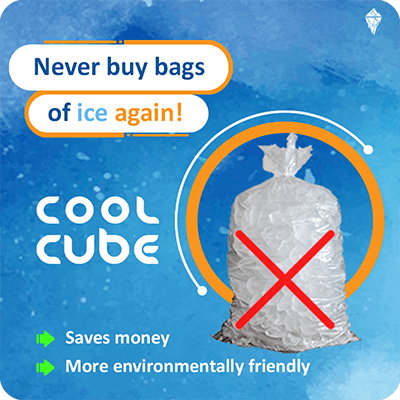
Potentes refrigeradores
No se necesita más hielo
Fácil instalación
Cualquier bañera o piscina sirve
Meditación en el frío: Mejorar la concentración mental con rituales de baño de hielo
3 de octubre de 2023
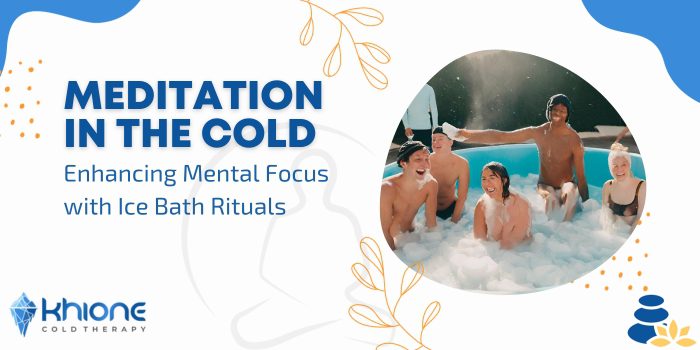

La mezcla de meditación e inmersión en frío puede parecer contraintuitiva al principio. Mientras que la meditación suele evocar imágenes de entornos cálidos y confortables, la exposición al frío pinta un cuadro de incomodidad y desafío. Sin embargo, cuando la serena práctica de la meditación se une a la estimulante experiencia de la inmersión en frío, el resultado es un viaje mental transformador. Profundicemos en la sinergia de estas dos prácticas y en cómo pueden aumentar nuestra atención, resistencia y concentración.
La esencia de la meditación
La meditación, en esencia, es una práctica para anclar la mente, ya sea en la respiración, en un mantra o simplemente en el momento presente. Al entrenar nuestra mente para que permanezca centrada a pesar de las distracciones externas o internas, cultivamos un estado de paz, claridad y mayor conciencia.
Inmersión en frío: La prueba definitiva de la atención plena
La inmersión en frío es una auténtica prueba de atención plena. Cuando nuestro cuerpo se enfrenta al choque del agua helada, el instinto inmediato es huir o luchar. Sin embargo, permanecer presentes en esta incomodidad nos obliga a trascender nuestras reacciones primarias y a enraizarnos en el presente.
La relación simbiótica
- Mayor presencia: La pura intensidad de la inmersión en frío garantiza que estés totalmente presente. La mente no divaga; está completamente en el ahora, amplificando la esencia de la meditación.
- Respiración profunda: Como sabe cualquiera que esté familiarizado con el método Wim Hof, la exposición al frío puede estimular una respiración profunda y rítmica. Esta respuesta natural se alinea perfectamente con las prácticas de meditación que hacen hincapié en la conciencia de la respiración.
- Resiliencia mental: Afrontar y aceptar continuamente la incomodidad del frío cultiva una fortaleza mental que es transferible a otros retos de la vida.
- Conciencia sensorial: El frío amplifica las sensaciones corporales, haciéndonos más conscientes de nuestra presencia física, lo que ayuda en las técnicas de meditación de exploración corporal.
Incorporación de rituales de baños de hielo a la meditación
La utilización de máquinas enfriadoras por baño de hielo puede mejorar significativamente esta experiencia combinada:
- La consistencia es la clave: La máquina garantiza una temperatura constante, lo que le permite centrarse únicamente en su práctica meditativa sin la distracción de los niveles fluctuantes de frío.
- La seguridad es lo primero: al poder controlar la duración y la temperatura, puedes superar tus límites sin riesgos.
- Prepara el escenario: Acompaña tu ritual de baño helado con música relajante, aceites esenciales o meditaciones guiadas para enriquecer la experiencia.
Meditación post-inmersión en frío
Para quienes no estén preparados para meditar durante la inmersión en frío, meditar inmediatamente después proporciona un conjunto único de beneficios. El subidón de endorfinas posterior a la inmersión, combinado con la respuesta de relajación natural del cuerpo, puede allanar el camino para una sesión de meditación increíblemente profunda.
Conclusión
Aunque tanto la meditación como la inmersión en frío son poderosas por sí solas, su combinación puede conducir a una mejora sinérgica de la claridad mental, la concentración y la resistencia. Es un viaje de inmersión profunda, tanto literal como metafóricamente, en los reinos de la mente y el cuerpo. Si buscas una experiencia meditativa más intensa, considera la posibilidad de incorporar el escalofrío: podría ser el avance que necesitas.
La verdadera tendencia en el ciclismo profesional: Baños de hielo para la recuperación definitiva - Por qué Adam Yates y posiblemente usted deberían plantearse CoolTub y CoolCube
13 de septiembre de 2023
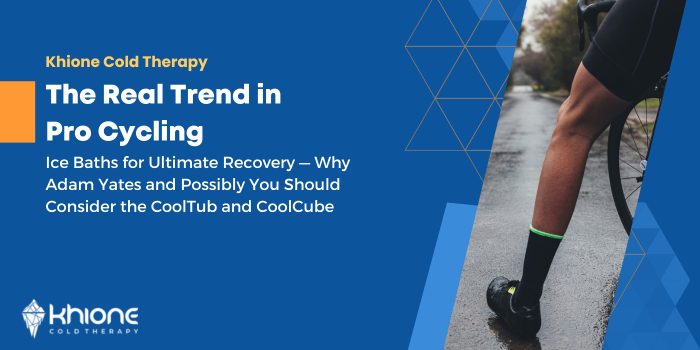

En el apasionante mundo del ciclismo profesional, en el que cada segundo cuenta, los atletas buscan constantemente esa ventaja adicional en el rendimiento y la recuperación. Recientemente hemos sido testigos de algo absolutamente fascinante en el Tour de Francia, que puede no ser tan llamativo como una llegada al sprint, pero que podría ser igual de impactante en el gran esquema de una carrera.
Hielo, hielo, bebé: Yates se da un chapuzón
Imagínese esto. Estás entre el grupo de periodistas y aficionados, esperando ansiosamente cerca de los autobuses de los equipos tras una agotadora etapa del Tour de Francia que termina en La Super Planche des Belles Filles. Entre los ciclistas, Tadej Pogačar acaba de ganar la etapa, pero no es él quien capta tu atención. Es Adam Yates, del Ineos Grenadiers, quien acapara los titulares, pero no por cruzar primero la línea de meta. En cambio, ha captado la atención de todo el mundo por una razón diferente. Se está dando un baño de hielo.
Después de quedar noveno en la séptima etapa, perdiendo 29 segundos más una bonificación de 10 segundos con el líder de la carrera, Yates no se dirigió a la ducha habitual en el autobús ni se subió a un turboentrenador para entrar en calor como su compañero de equipo Geraint Thomas. No, optó por un baño frío. En un día abrasador en el este de Francia, con temperaturas que superaban los 24 grados centígrados, la decisión pareció tan inesperada como absolutamente brillante.
El porqué y el cómo de la sesión de relajación de Yates
Yates tiene un historial de dificultades en condiciones de calor extremo. ¿Recuerdas el Tour de Francia de 2018? El calor le hizo perder un tiempo valioso. Este año, no dejará piedra sobre piedra, lo que incluye dar prioridad a la refrigeración inmediata después de la etapa.
¿Nueva ganancia marginal? Baño de hielo post carrera para Adam Yates. #TDF2022 pic.twitter.com/r3RfIxYpDy
- Sophie Smith (@SophieSmith86) 8 de julio de 2022
Rod Ellingworth, director adjunto del equipo Ineos, aclaró: "Siempre intenta enfriarse en cuanto puede, así que hace un trabajo bastante bueno con ello. Es uno de los retos logísticos de intentar mover estas cosas".
Entre en CoolTub y CoolCube: El futuro del baño de hielo en el ciclismo
Aunque lo que utilizó Yates puede ser un poco más rudimentario, ¿imaginas que hubiera tenido acceso a algo aún mejor? Esto nos lleva a nuestros productos estrella, CoolTub y CoolCube. A diferencia de las bañeras hinchables, que son más parecidas a piscinas infantiles, la CoolTub ofrece una experiencia de baño helado lujosa a la par que práctica. Y no es sólo para ciclistas profesionales; cualquiera que desee una mejor recuperación física puede utilizarla.
¿Aún mejor? El CoolCube garantiza que el agua permanezca a la temperatura deseada, manteniendo las condiciones óptimas para la recuperación muscular, lo que lo convierte en un compañero indispensable del CoolTub.
La tendencia al alza de los baños de hielo en el ciclismo profesional
Yates no es una anomalía; forma parte de una tendencia creciente. Cada vez más ciclistas profesionales recurren a los baños de hielo para recuperarse. ¿Y por qué no iban a hacerlo? Los beneficios van desde un enfriamiento inmediato, como en el caso de Yates, hasta una recuperación muscular más rápida y menos dolor, todo lo cual puede ser crítico en una carrera larga y exigente como el Tour de Francia.
Si quieres optimizar tu régimen de entrenamiento y recuperación como un profesional, tienes que plantearte seriamente integrar los baños de hielo en tu rutina. Y qué mejor manera de hacerlo que con CoolTub y CoolCube?
Así que, tanto si eres un ciclista profesional como si simplemente te apasiona el fitness, si el enfriamiento inmediato y la recuperación muscular te suenan bien, ya es hora de que te apuntes a plunge , ¡literalmente!
¡Feliz enfriamiento! 🚴♂️❄️
Cómo incorporar baños de hielo a su rutina de bienestar
7 de septiembre de 2023
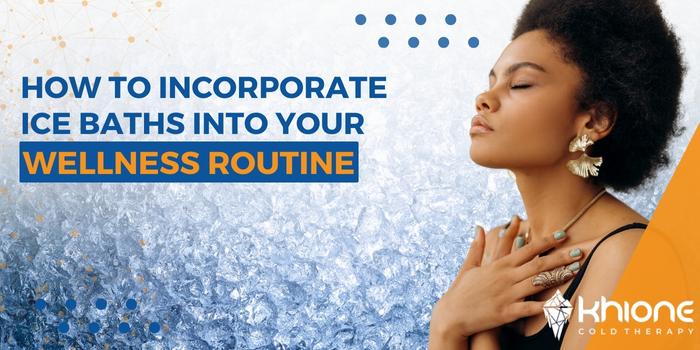

Introducción
El concepto de terapia de frío existe desde hace siglos, con raíces en diversas culturas y multitud de beneficios para la salud documentados. Sin embargo, la industria del bienestar moderno está viendo un resurgimiento del interés en los baños de hielo, gracias en parte a la tecnología y la investigación de vanguardia. Como expertos en terapia de frío, en Khione hemos desarrollado una serie de equipos diseñados para mejorar la experiencia del baño de hielo. Entonces, ¿cómo incorporar esta práctica antigua pero innovadora a su rutina de bienestar? Siga leyendo para descubrirlo.
Empezar por lo básico: Conozca las ventajas
Antes de zambullirse en el agua helada, es crucial comprender los beneficios potenciales que conlleva:
- Recuperación muscular más rápida
- Mejora de la circulación
- Reducción de la inflamación
- Mayor claridad mental
- Estado de ánimo elevado
- Metabolismo reforzado
Determine sus objetivos
Saber por qué está tomando el plunge puede guiar la forma de incorporar los baños de hielo en su rutina. ¿Es usted un atleta centrado en la recuperación muscular? ¿Un profesional ocupado que busca desestresarse? Adaptar la experiencia del baño de hielo a sus necesidades específicas le ayudará a conseguir resultados óptimos.
Encontrar el equipo adecuado
Desde baños de hielo portátiles hasta lujosas instalaciones domésticas, hay opciones para todos los gustos. Khione ofrece una gama de opciones diseñadas para adaptarse a distintos estilos de vida y presupuestos. Evalúe su espacio, frecuencia de uso y otras preferencias para tomar una decisión informada.
El momento oportuno lo es todo
Es crucial encontrar el momento óptimo para incorporar los baños de hielo a tu rutina. He aquí algunas pautas:
- Para deportistas: Después del entrenamiento suele ser lo mejor para la recuperación muscular.
- Para aliviar el estrés: Cualquier momento es bueno, aunque muchos prefieren los baños nocturnos para relajarse antes de acostarse.
- Para la claridad mental: Los baños de hielo matutinos pueden ayudarte a empezar el día con energía.
Temperatura y duración: Encuentre su punto óptimo
La temperatura de un baño de hielo suele oscilar entre 3-12 °C (50-59 °F). La duración puede variar entre 3 y 20 minutos, en función del nivel de comodidad y los objetivos. Los principiantes deben empezar con duraciones más cortas e ir aumentando.
La seguridad ante todo
Aunque los baños de hielo ofrecen multitud de beneficios, no son adecuados para todo el mundo. Las personas con afecciones cardiacas, enfermedad de Raynaud o embarazadas deben consultar a un profesional sanitario antes de probar la terapia fría. Escucha siempre a tu cuerpo y opta por un observador si eres nuevo en esta práctica.
Terapias complementarias
Para potenciar aún más los beneficios, considere la posibilidad de integrar otras prácticas de bienestar como la respiración profunda, la meditación o incluso combinar su baño de hielo con una sesión de sauna caliente (con las debidas precauciones, por supuesto).
Regularidad y coherencia
La constancia es la clave de los baños de hielo. Aunque la frecuencia puede depender de sus objetivos y estilo de vida, una recomendación común es de 2-4 veces a la semana para obtener resultados notables.
Conclusión
Incorporar los baños de hielo a su rutina de bienestar puede ser una experiencia gratificante que ofrece un sinfín de beneficios físicos y mentales. Con la selección de equipos de primer nivel de Khione, empezar nunca ha sido tan fácil. Como siempre, consulte con su médico si padece alguna enfermedad preexistente y recuerde que el bienestar es un viaje, ¡de hielo en hielo plunge !
Si tiene más preguntas o necesita más orientación, no dude en ponerse en contacto con nosotros. ¡Feliz descanso!
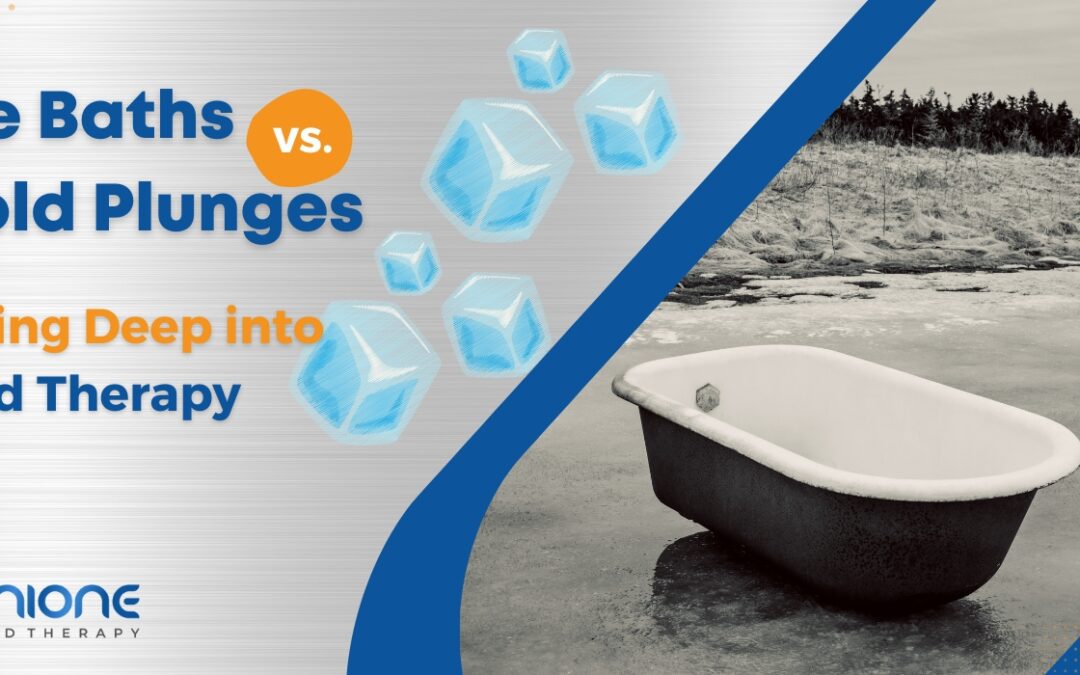

La terapia con frío, una práctica profundamente arraigada en la historia de la humanidad, ha experimentado un resurgimiento en los últimos años, impulsada tanto por los deportistas de élite como por los entusiastas de la salud. Entre las modalidades populares de terapia con frío se encuentran el icónico baño de hielo y el cada vez más frecuente plunge. Pero, ¿en qué se diferencian exactamente? ¿Y qué tienen en común? Si quieres sumergirte en el gélido mundo de la terapia con frío, este artículo te ayudará a romper el hielo.
1. ¿Qué son?
Baños de hielo: El baño de hielo, como su nombre indica, es una bañera llena de hielo y agua. Los atletas y entrenadores suelen utilizarlos para aliviar las agujetas después de un esfuerzo físico intenso.
Inmersiones frías: Una piscina fría plunge, o piscina fría plunge , es esencialmente una piscina pequeña y profunda llena de agua fría. Aunque su finalidad principal también es la recuperación, está diseñada para inmersiones rápidas y envolventes, más que para baños prolongados.
2. Diferencias de temperatura
Baños de hielo: Las temperaturas suelen oscilar entre 3 y 10 °C. El hielo del baño garantiza que la temperatura se mantenga fría durante toda la terapia.
Inmersiones frías: Las piscinas frías de plunge se mantienen a temperaturas más bajas, a menudo entre 1 °C y 5 °C). Con la ayuda de enfriadores de baños de hielo, la temperatura se mantiene constante, eliminando la necesidad de añadir hielo con regularidad.
3. Duración del uso
Baños de hielo: Los usuarios suelen permanecer en baños de hielo entre 3 y 10 minutos. El tiempo puede variar en función de la tolerancia individual y de las necesidades específicas de recuperación.
Inmersiones en frío: Las inmersiones en frío están diseñadas para duraciones más cortas, normalmente de 1 a 3 minutos. La idea es sumergirse rápidamente, experimentar el choque terapéutico y salir.
4. Beneficios
Tanto los baños de hielo como las zambullidas frías ofrecen numerosos beneficios:
Recuperación muscular: Las temperaturas frías ayudan a reducir la inflamación y el dolor muscular después del ejercicio.
Mejora de la circulación: La inmersión en frío hace que los vasos sanguíneos se contraigan y se dilaten al salir, lo que favorece la circulación.
Mejora de la respuesta inmunitaria: La terapia de frío regular puede provocar un aumento de los glóbulos blancos, mejorando la respuesta inmunitaria del organismo.
Agudeza mental: La experiencia del frío puede aumentar el estado de alerta y la claridad de pensamiento.
5. 5. Equipamiento y mantenimiento
Baños de hielo: Un baño de hielo puede ser tan sencillo como una bañera llena de agua y hielo. Sin embargo, para mantener la temperatura deseada hay que añadir hielo con regularidad. Para una experiencia más controlada, muchos optan por los enfriadores de baños de hielo.
Inmersiones frías: Las piscinas frías plunge están equipadas con refrigeradores para mantener temperaturas constantes. Requieren limpieza y mantenimiento periódicos para garantizar la calidad del agua.
Conclusión
Tanto si te inclinas por el crujiente abrazo de un baño helado como por la profunda inmersión de un baño frío plunge, ambas opciones ofrecen increíbles beneficios para el cuerpo y la mente. Sea cual sea el camino que elija, le espera el refrescante frío de la terapia del frío.
Si está interesado en equiparse para la experiencia definitiva de terapia de frío, explore nuestra gama de baños de hielo y enfriadores, diseñados para mejorar su viaje de recuperación. Sumérjase y experimente el frío.
La revolución helada: Por qué los baños de hielo y los equipos de refrigeración son las herramientas de bienestar definitivas
Agosto 10, 2023
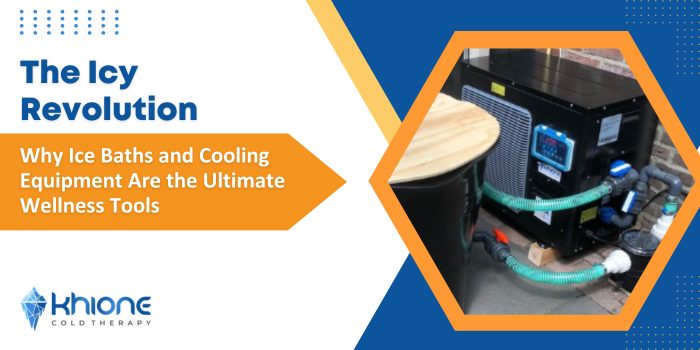

No es ningún secreto que la salud y el bienestar están más de moda que nunca. Desde las dietas basadas en plantas hasta las aplicaciones de mindfulness, todo el mundo busca una salud óptima. Pero, ¿has pensado alguna vez en los beneficios potenciales de algo tan sencillo (pero profundo) como la terapia de frío? Ya no es sólo para deportistas. Bienvenido a la revolución helada que traen los baños de hielo y una serie de innovadores equipos de refrigeración como CoolTub Ice Bath, CoolCube Ice Bath Cooler y la almohada refrigerada CoolPillow.
Baños de hielo: Algo más que agua fría
Aunque pueda parecer que simplemente te estás metiendo en un cubito de hielo de gran tamaño, los beneficios de un baño de hielo son profundos.
- Recuperación muscular: Los atletas lo adoran. Después de una agotadora sesión de entrenamiento, la temperatura fría ayuda a reducir la inflamación, aliviar las agujetas y acelerar la recuperación.
- Aumenta la fortaleza mental: Superar el choque inicial del agua fría aumenta la resistencia mental y puede traducirse en afrontar los retos cotidianos con mayor serenidad.
- Mejora la circulación: La inmersión en agua fría aumenta el flujo sanguíneo, garantizando que tus células reciban los nutrientes y el oxígeno que necesitan.
Y con el CoolTub Ice Bath, no está adquiriendo simplemente una bañera. Está invirtiendo en una herramienta precisa para controlar la temperatura y garantizar la experiencia de inmersión más beneficiosa.
Keeping It Cool con el CoolCube
Si se toma en serio sus baños de hielo, mantener la temperatura adecuada es crucial. El CoolCube Ice Bath Cooler es su compañero de confianza para ello.
- Precisión de temperatura: Con CoolCube, se acabaron las conjeturas. Ajuste la temperatura deseada y deje que se encargue del resto.
- Eficacia: El equipo enfría rápidamente el agua, garantizando que su baño esté listo cuando usted lo esté.
- Seguridad: Está construido con materiales de alta calidad que garantizan una experiencia de enfriamiento duradera y segura.
Duerme frío, duerme mejor con la CoolPillow
¿Alguna vez ha volteado la almohada para sentir el lado más fresco? ¿Y si pudieras mantener esa sensación fría y refrescante durante todo el sueño? Te presentamos la CoolPillow.
- Sueño profundo: Una cabeza más fría promueve mejores ciclos de sueño profundo, mejorando la calidad general del sueño.
- Regulación de la temperatura: Se acabaron los sudores nocturnos. La CoolPillow te mantiene siempre fresco, garantizando un entorno de sueño confortable.
- Confort de espuma con memoria: ¿Tecnología refrescante combinada con espuma con memoria? Es la combinación perfecta para una noche de descanso.
Conclusión: Abrazar el frío
La terapia con frío, antaño exclusiva de los atletas de alto nivel, es ahora accesible y beneficiosa para todos. Con productos como CoolTub, CoolCube y CoolPillow, no sólo se adquiere un equipo, sino que se invierte en un estilo de vida que favorece la recuperación, la resistencia y la relajación. Sumérgete en la revolución del frío y descubre por ti mismo sus profundos beneficios.
¿Le interesa empezar? Consulte nuestra gama de baños de hielo y equipos de refrigeración para comenzar su viaje de terapia de frío.
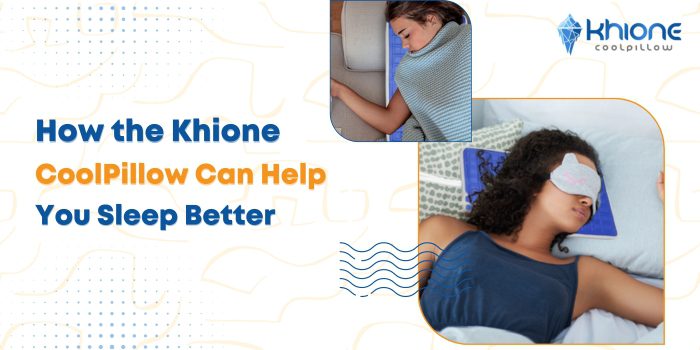

Dormir es esencial para nuestra salud y bienestar. Sin embargo, a muchas personas les resulta difícil dormir bien, sobre todo en las noches calurosas. Esto se debe a que nuestra temperatura corporal disminuye de forma natural cuando dormimos y, si tenemos demasiado calor, puede interrumpir nuestro sueño.
El Khione CoolPillow es una almohada refrigerante a base de agua que utiliza un innovador sistema de control de la temperatura para mantener la cabeza fresca y cómoda durante toda la noche. La almohada está fabricada con un tejido suave y transpirable que elimina la humedad, y la unidad de refrigeración es silenciosa, por lo que no le molestará ningún ruido.
La CoolPillow de Khione puede ayudarle a dormir mejor de varias maneras:
- Le ayuda a dormir más fresco. Este es el beneficio más obvio de la almohada Khione CoolPillow. Cuando no tienes demasiado calor, es más probable que te duermas y permanezcas dormido.
- Reduce las vueltas en la cama. Cuando tiene calor, tiende a dar más vueltas en la cama, lo que puede interrumpir su sueño. La almohada CoolPillow de Khione puede ayudarle a mantenerse fresco y cómodo, por lo que es menos probable que dé vueltas en la cama.
- Mejora la calidad del sueño. Cuando duerme mejor, es más probable que se sienta fresco y con energía al día siguiente. La almohada Khione CoolPillow puede ayudarle a dormir mejor por la noche, para que pueda despertarse sintiéndose lo mejor posible.
Si está buscando una forma de mejorar la calidad de su sueño, la almohada CoolPillow de Khione es una gran opción. Es cómoda, eficaz y fácil de usar. Pida la suya hoy mismo y empiece a disfrutar de los beneficios de un sueño más fresco y confortable.
He aquí algunos consejos adicionales para dormir mejor:
- Cree una rutina relajante para irse a dormir.
- Asegúrate de que tu dormitorio sea oscuro, tranquilo y fresco.
- Evite la cafeína y el alcohol antes de acostarse.
- Haga ejercicio con regularidad, pero no demasiado cerca de la hora de acostarse.
- Consulte a un médico si padece algún trastorno del sueño.
Con un poco de esfuerzo, puede conseguir el sueño que necesita para sentirse lo mejor posible. La almohada Khione CoolPillow puede ayudarle a dormir mejor por la noche, para que pueda despertarse sintiéndose fresco y con energía.
La solución definitiva para las noches calurosas
17 de julio de 2023
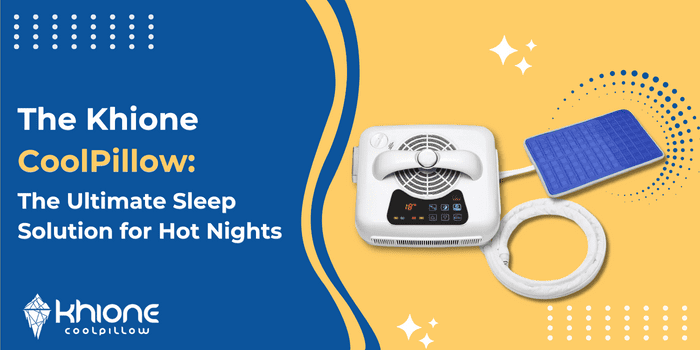

¿Das vueltas en la cama toda la noche buscando un lugar fresco donde recostar la cabeza? Si es así, no está solo. Millones de personas sufren problemas de sueño a causa del calor. Pero hay esperanza. La CoolPillow de Khione es la solución definitiva para las noches calurosas.
La Khione CoolPillow es una almohada refrigerante a base de agua que utiliza un innovador sistema de control de la temperatura para mantener la cabeza fresca y cómoda durante toda la noche. La almohada está fabricada con un tejido suave y transpirable que elimina la humedad, y la unidad de refrigeración es silenciosa, por lo que no le molestará ningún ruido.
La CoolPillow de Khione es fácil de usar. Basta con enchufarla, ajustar la temperatura al nivel deseado y disfrutar de un sueño fresco y confortable. La almohada también es ajustable, para que pueda adaptarla a sus necesidades individuales.
La almohada CoolPillow de Khione es la solución perfecta para las personas que duermen con calor. Es cómoda, eficaz y fácil de usar. Si está buscando una forma de mejorar su calidad de sueño en las noches calurosas, la CoolPillow de Khione es la elección perfecta para usted.
Estas son algunas de las ventajas de utilizar la almohada CoolPillow de Khione:
- Ayuda a dormir más fresco y cómodo en las noches calurosas.
- Puede ayudarle a reducir las vueltas en la cama, lo que puede mejorar la calidad del sueño.
- Es fácil de usar y se puede ajustar al nivel de frescor deseado.
- Está fabricado con materiales de alta calidad y construido para durar.
- Está respaldado por una garantía de satisfacción.
Si buscas una forma de dormir mejor en las noches calurosas, la Khione CoolPillow es la solución perfecta para usted. ¡Pida la suya hoy mismo y empiece a disfrutar de los beneficios de un sueño más fresco y confortable!
Para obtener más información sobre Khione CoolPillow, puede ponerse en contacto con nosotros.
Aliviar las migrañas de forma natural con terapia de frío
5 de julio de 2023


La naturaleza humana siempre ha encontrado consuelo en los poderes curativos de la naturaleza. Cuando se trata de tratar las migrañas, la terapia de frío surge como un enfoque natural y eficaz. Con su capacidad para proporcionar un alivio instantáneo y unos efectos secundarios mínimos, la terapia de frío ofrece una solución prometedora para quienes buscan una alternativa natural a los medicamentos tradicionales. Profundicemos en las maravillas de la terapia de frío y en cómo puede ayudar a aliviar las migrañas.
¿Qué es la migraña?
Las migrañas son dolores de cabeza debilitantes que suelen ir acompañados de síntomas como náuseas, sensibilidad a la luz y el sonido y dolor punzante. Estos episodios pueden alterar considerablemente la vida cotidiana y dejar a las personas desesperadas por aliviarse. Aunque existen analgésicos de venta libre y medicamentos con receta, algunas personas prefieren un enfoque más holístico que no dependa de intervenciones farmacéuticas.
La ciencia detrás de la terapia del frío:
La terapia de frío, también conocida como crioterapia, consiste en aplicar frío en zonas específicas del cuerpo. La temperatura fría contrae los vasos sanguíneos, reduciendo el flujo sanguíneo y adormeciendo la zona, lo que alivia el dolor. Cuando se aplica en las sienes o en la nuca durante un ataque de migraña, la terapia de frío puede ayudar a aliviar el dolor y minimizar los síntomas acompañantes.
Técnicas naturales de terapia con frío:
Compresa fría: Coloca una compresa fría o una bolsa de verduras congeladas envuelta en un paño sobre la zona afectada. Aplica una presión suave durante 15-20 minutos para reducir la inflamación y calmar el dolor.
Duchas frías: Tomar una ducha fría puede ayudar a reducir la temperatura corporal general, aliviando la intensidad de una migraña. Empieza con agua templada y ve reduciendo gradualmente la temperatura hasta llegar a un nivel confortablemente frío.
Almohada Ice Pack / Almohada fría: Rellene una funda de almohada con bolsas de hielo y apoye la cabeza sobre ella durante un ataque de migraña. Esta técnica actúa simultáneamente sobre las sienes y la nuca, proporcionando un alivio completo.
Beneficios de la terapia de frío:
La terapia con frío para aliviar la migraña ofrece numerosas ventajas. Es un método no invasivo y sin fármacos que puede incorporarse fácilmente al estilo de vida de cada uno. A diferencia de los medicamentos, la terapia de frío no conlleva el riesgo de efectos secundarios potenciales, por lo que es una alternativa segura para aquellos que buscan un alivio natural.
La naturaleza siempre nos ha proporcionado remedios extraordinarios para diversas dolencias, y la terapia con frío destaca como una solución natural eficaz para los migrañosos. Al aprovechar el poder del frío, podemos aprovechar la capacidad innata del cuerpo para curarse y encontrar alivio a las migrañas. Así que, la próxima vez que te asalte una migraña, considera la posibilidad de abrazar el frío de la terapia con frío y deja que la naturaleza haga su magia en tu camino hacia el bienestar.
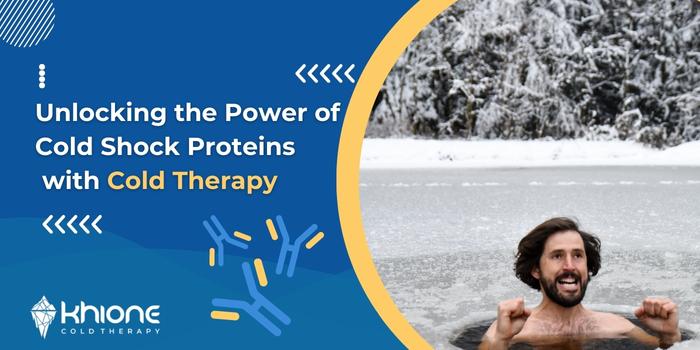

Las proteínas de choque frío (CSP) son proteínas producidas en respuesta al estrés por frío, que ayudan a las células a adaptarse a las bajas temperaturas protegiendo las proteínas del desdoblamiento y manteniendo las membranas celulares. Las CSP se unen a las proteínas desplegadas, impiden su agregación y garantizan su correcto plegamiento, que es crucial para el funcionamiento celular a bajas temperaturas. Estas proteínas conservadas son esenciales para la supervivencia de células y organismos en ambientes fríos, actuando como guardianes, estabilizando las estructuras celulares, regulando la expresión génica y facilitando la reparación de moléculas dañadas. Las CSP se encuentran en diversos organismos, como bacterias, arqueas, plantas y animales, y son esenciales para la supervivencia de células y organismos en ambientes fríos.
Activación de las Proteínas de Choque Frío:
Exposición gradual al frío: Comience exponiéndose gradualmente a temperaturas más frías. Comience con períodos más cortos y aumente gradualmente el tiempo de exposición a medida que su cuerpo se adapta. Esto podría incluir duchas frías, baños de hielo o pasar tiempo al aire libre en ambientes fríos.
Inmersión en agua fría: Tome baños o duchas de agua fría. Empiece con agua tibia y disminuya gradualmente la temperatura con el tiempo. Pase unos minutos en el agua fría para permitir que su cuerpo se adapte y desencadene la producción de PSC.
Técnicas de entrenamiento en frío: Explore metodologías como el Método Wim Hofque combina ejercicios específicos de respiración con la exposición al frío. Esta técnica puede potenciar la activación de los PSC y favorecer el bienestar general.
Beneficios de las proteínas de choque en frío:
La activación de las proteínas de choque frío puede tener numerosos beneficios potenciales. Las investigaciones sugieren que pueden potenciar la respuesta al estrés, mejorar la función inmunitaria y promover la resiliencia general. Sin embargo, es importante señalar que se necesita más investigación para comprender plenamente sus mecanismos y aplicaciones.
Palabras finales:
Las proteínas de choque frío representan un aspecto intrigante de la biología celular, revelando la notable adaptabilidad del cuerpo al estrés por frío. Mediante la exposición gradual al frío y la utilización de técnicas como la inmersión en agua fría y métodos de entrenamiento en frío, podemos potencialmente desbloquear los beneficios de estas proteínas y reforzar nuestra resistencia celular.
Experimente las ventajas revitalizantes de los baños de hielo durante todo el verano en la comodidad de su propio hogar con el Khione CoolCube. Explore la colección completa de equipos de refrigeración por baño de hielo en www.khione.store y asegúrese de que este verano sea el más refrescante de su vida.
Mejorar la función cognitiva con terapia de frío
Junio 9, 2023
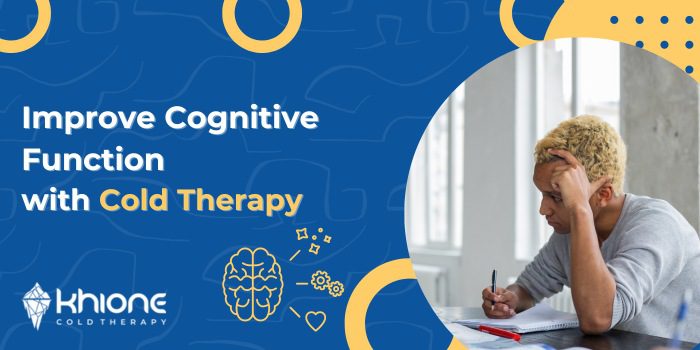

¿Alguna vez se ha preguntado si existe una forma sencilla pero eficaz de agudizar el pensamiento, mejorar la concentración y potenciar la función cognitiva en general? No busque más: ¡la terapia del frío! Aunque pueda parecer sorprendente, someter el cuerpo a bajas temperaturas puede tener numerosos beneficios para el cerebro. En esta entrada del blog, exploraremos la ciencia detrás de la terapia de frío y su potencial para mejorar la función cognitiva.
La terapia de frío es un tipo de medicina alternativa que utiliza la exposición a temperaturas frías para mejorar la salud y el bienestar. Se ha demostrado que tiene una serie de beneficios, como reducir la inflamación, mejorar la circulación y reforzar el sistema inmunitario.
En los últimos años, también se ha demostrado que la terapia con frío puede ser beneficiosa para la función cognitiva. Los estudios han demostrado que la exposición al frío puede aumentar la actividad cerebral, mejorar la memoria y reducir el estrés.
Una de las formas en que la terapia de frío puede mejorar la función cognitiva es aumentando el flujo sanguíneo al cerebro. Cuando el cuerpo se expone al frío, libera hormonas que provocan la constricción de los vasos sanguíneos. Esto aumenta la presión sanguínea y obliga a que fluya más sangre a los órganos vitales, incluido el cerebro.
La exposición al frío también puede aumentar la actividad cerebral. Los estudios han demostrado que las bajas temperaturas pueden aumentar la producción del factor neurotrófico derivado del cerebro (BDNF), una proteína que ayuda a proteger y reparar las neuronas. El BDNF es esencial para el aprendizaje y la memoria, y sus niveles tienden a disminuir con la edad.
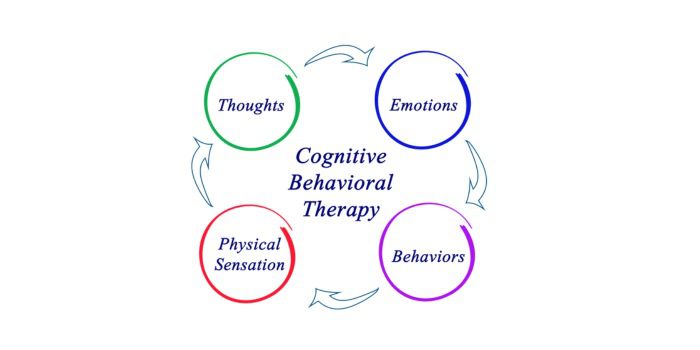

Terapia de frío y función cognitiva:
Los estudios han revelado que la terapia de frío también puede influir positivamente en la función cognitiva. Al exponerse a temperaturas frías, nuestro cuerpo libera endorfinas y activa el sistema nervioso simpático, lo que aumenta la circulación sanguínea y el aporte de oxígeno al cerebro. Esta mejora del flujo sanguíneo facilita el suministro de nutrientes esenciales y elimina los residuos metabólicos, lo que mejora la función cerebral.
Mejora de la memoria y la concentración:
Se ha demostrado que la terapia de frío mejora la memoria y el rendimiento cognitivo. La exposición al frío estimula la producción de norepinefrina, un neurotransmisor responsable de regular la atención y la concentración. Este mayor nivel de norepinefrina ayuda a mejorar la concentración, la retención de la memoria y la agudeza mental en general.
Elevación del estado de ánimo y reducción del estrés:
Además, la terapia de frío tiene efectos positivos sobre el estado de ánimo y la reducción del estrés. La exposición al frío provoca la liberación de endorfinas, conocidas como hormonas del bienestar. Estas endorfinas favorecen la relajación, reducen la ansiedad y elevan el estado de ánimo, todo lo cual contribuye a mejorar la función cognitiva.
Incorpore la terapia del frío a su rutina:
Para experimentar los beneficios cognitivos de la terapia de frío, comience por introducir gradualmente duchas frías o baños de hielo en su rutina diaria. Empiece con periodos cortos y aumente poco a poco el tiempo de exposición a medida que su cuerpo se acostumbra al frío. También puede explorar las cámaras de crioterapia disponibles en centros de bienestar específicos.
Conclusión:
Mejorar su función cognitiva no tiene por qué ser complicado. La terapia del frío es una forma sencilla y eficaz de potenciar su cerebro. Incorporando duchas frías o baños de hielo a su rutina, puede mejorar la memoria, la concentración y el rendimiento cognitivo en general. Así que, ¡aproveche el poder del frío y libere todo el potencial de su cerebro! Si desea iniciarse en la terapia del frío, experimente su poder transformador con CoolCube. Pruebe nuestro potente enfriador de agua hoy mismo y libere todo el potencial de su viaje de terapia de frío.



